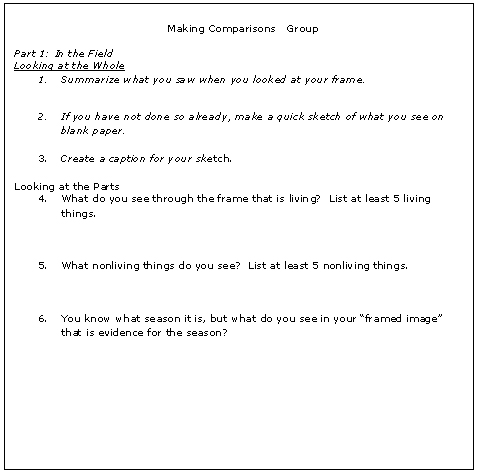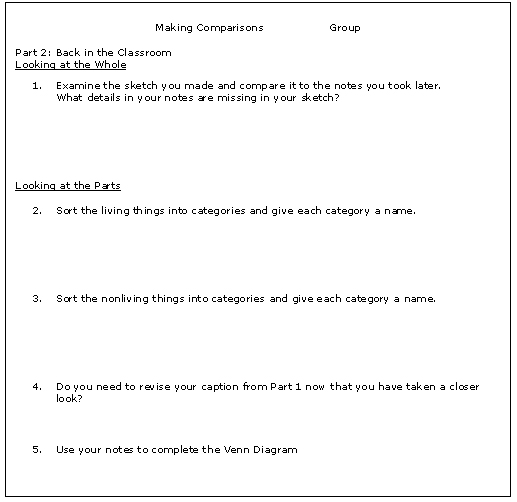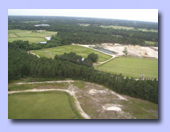|
Lesson Plan:
Overview
Background
Materials
Preparation
Step-by-Step
|
- Let students know that in this lesson, they will make comparisons between a cranberry bog and some part of their environment with which they are more familiar (specify it now).
- Engage students in a discussion reviewing the images presented in, “Welcome to the Bog.” Ask students to recall specifics of one image that stood out as particularly interesting. Record students’ responses on chart paper or board.
- Return to the section, “Welcome to the Bog”, or distribute printed images.
- Give students 5-7 minutes to review the images. Invite students to add new thoughts to the class chart.
- Have student pairs select one bog image that they will use for their comparative study.
- Distribute cardboard frames and paper on clipboards to student pairs and explain how they will be used.
- Students will look through the frames at their familiar site, making observations of only the part of the site they can see in the frame. Note: A large frame (8.5” x 11” sheet, for example) should be positioned at least arm’s length from students, whereas a smaller one (3” x 5” index card, for example) can be held closer.
- The blank paper and clip boards are for recording their own observations and sketches. (Later, students will also receive an observation sheet with questions on it.)
- Take students to the viewing site. Ask each group to use their frame to capture and focus in on one spot.
- Give students 7-10 minutes to make their own, free form written observations and sketches of the site, as seen through their frame.
- Distribute Student Worksheet: Making Comparisons, Part 1. Provide a few minutes for students to complete the worksheet, reminding them to continue to focus on what they see inside the frame.

- Return to the classroom. Have students complete Making Comparisons, Part 2

- Have students use all their notes and sketches to complete the Venn diagram
- Discuss student insights from this experience. Some sample discussion points follow; choose or replace as appropriate for your classroom:
- Have student groups share some of the similarities they note between the bog and the familiar site. Did different groups note different comparisons? How can we account for these differences? What new understandings do students have about the bog as a result of the lesson? Do these insights help to answer any of the questions on the Cranberry Questions Chart in the classroom? What new questions do they have about the bog? Add these to the Cranberry Questions Chart.
- Consider both sites as ecosystems
- How is a bog an ecosystem? How is the familiar site?
- One of the things we know about ecosystems is that the parts interact with each other. What interactions do students see or infer among the parts of the bog? (Predator/prey, producer/consumer/decomposer, water/plants and animals, sun and plants, soil and plants, decomposers/soil) What interactions do they see or infer among the parts of their site?
|







